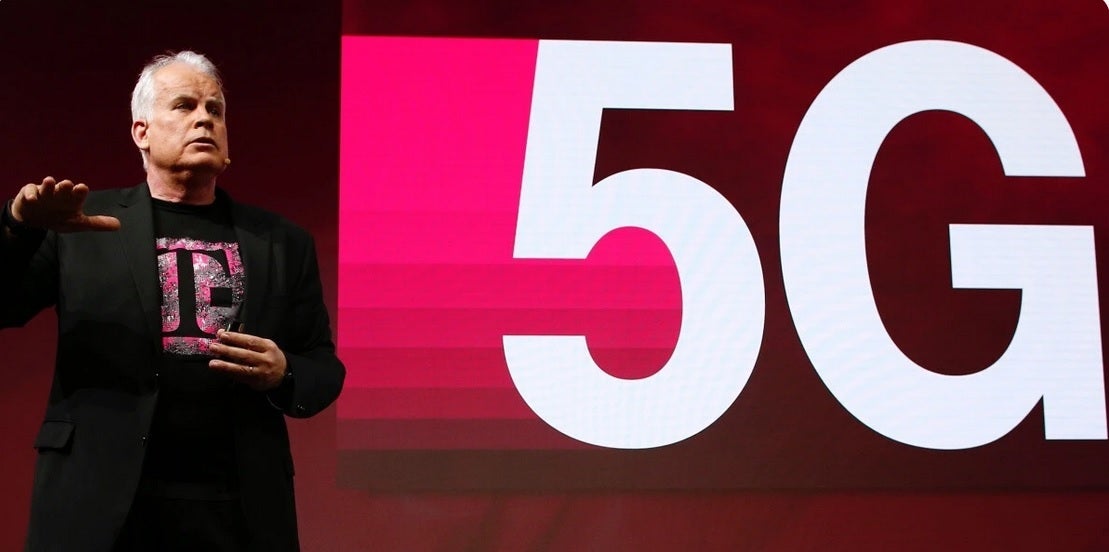Three Pixel models lost support for 5G SA networks following the March update

According to a Reddit subscriber with the handle "chisprice" (via AndroidPolice) older Pixel models with 5G support such as the Pixel 4a (5G), Pixel 5, and Pixel 5a, no longer have support for 5G standalone (SA) networks following the March update. It should be noted that those three models are powered by Qualcomm's Snapdragon chipsets and not the Google Tensor SoCs found in the Google 6 and Google 7 lines. Pixel units powered by the Tensor chips are apparently not affected (more on this later).
March update removes 5G SA support from the Pixel 4a (5G), Pixel 5, and Pixel 5a
A 5G standalone (SA) network, simply put, uses infrastructure designed for 5G only. It offers the super-low latency that will help 5G power self-driving cars, remote surgery, and other things that require a quick response from the network. U.S. carriers like T-Mobile, AT&T, and Verizon initially used non-standalone 5G networks (NSA) because it allowed them, by using their LTE networks, to quickly launch 5G services on top of the 4G core.

Three Pixel phones won't work with T-Mobile's 5G SA network
Only Dish Wireless, which doesn't have an LTE network of its own, is building a standalone 5G network right from the start. T-Mobile is currently the only U.S. carrier using 5G SA and at the start of this month, it reported on some improvements it is making, including four-carrier aggregation, to the network.
Similar to how VoLTE (Voice over LTE) allows calls to be made over LTE networks, VoNR (Voice over New Radio) allows for calls to be handled by a 5G SA network. And according to Price, the Redditor who wrote the post, the Pixel 4a (5G), Pixel 5, and Pixel 5a might have had VoNR support disabled by Google because otherwise, when connected to T-Mobile's 600MHz low-band 5G signal via a non-standalone network, they might have been unable to make or take phone calls if they were recognized as being VoNR capable.
If this sounds confusing, just realize that 5G Pixel handsets powered by Snapdragon chipsets cannot access 5G SA networks. Price notes that Google waited until after the latest Pixel trade-in "fire sale" to make this change which means that Tensor-powered Pixels should continue to connect to 5G SA networks.
If you have one of the three Pixel models involved and you've already installed the March update, you can downgrade the firmware if you request a SIM unlock from T-Mobile if you're in the states. If you constantly get the "!" indicator instead of network bars when you're using T-Mobile 5G, you can also disable 5G support by going to Settings > Network & internet > SIMs > Preferred network type and select LTE.
Could Google enable VoNR for these three models with the April update?
Or, as Redditor Price writes, you can perform a factory reset, download the February firmware restore, and not install the March update. He explains it in more detail. "You would have to use Pixel Factory Images, download the February 2023 firmware restore... then enable OEM Unlocking in Developer Options, reboot to fastboot, then invoke fastboot flashing unlock - unlock the bootloader... and finally run the flash-all command on your computer (or use WebUSB if on ChromeOS)."
He adds, "Finally, when done invoke fastboot flashing lock inside fastboot to relock the bootloader. Then refuse to take the March update, which you will be regularly nagged about." Disabling 5G almost sounds like a walk in the park compared to these directions.
He adds, "Finally, when done invoke fastboot flashing lock inside fastboot to relock the bootloader. Then refuse to take the March update, which you will be regularly nagged about." Disabling 5G almost sounds like a walk in the park compared to these directions.
There is also the hope that the April update reverses this with an update that enables VoNR for the Pixel 4a (5G), Pixel 5, and the Pixel 5a. If you've been following along, you might ask, wouldn't this mean that those models won't have phone service via a low-band 5G NSA network? Isn't that why Google disabled the VoNR capabilities in the first place? Price, who says that he is a wireless computing veteran, states that the affected phones would probably work with VoNR enabled "if Google actually cared."













Things that are NOT allowed: